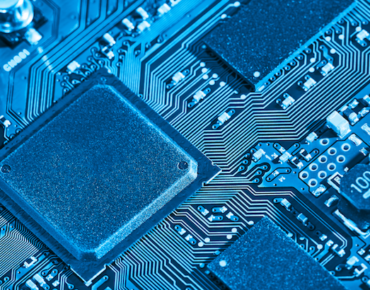Tight DRAM Supplies Jar Server Market

(Raimundas/Shutterstock)
Tightening global supplies of DRAM chips are beginning to bite with reports surfacing this week about rising server memory prices as chipmakers struggle to meet growing demand.
Among the first signs of tighter DRAM supplies and rising prices was a quarterly report by a memory market tracker issued on Aug. 14. DRAMeXchange reported that total server DRAM revenues for the top three manufacturers—Samsung, SK Hynix (KRX: 000660) and Micron Technology (NASDAQ: MU)—jumped more than 30 percent over the previous quarter. The revenue spike was attributed to high average selling prices for server DRAMs on "continuing undersupply."
"Server DRAM supply is expected to remain tight throughout the remainder of 2017," DRAMeXchange predicted, citing accelerating adoption of a high-density 32- and 64-Gb memory modules. The introduction later this year of servers based on Intel Corp.'s (NASDAQ: INTC) Skylake-SP platform, code-named "Purley," are expected to increase demand for DDR4 memory models, further tightening DRAM supplies, the market watcher said.
Those product introductions and resulting high DRAM prices are now bumping up server memory prices as supplies tighten. The Register reported on Monday (Aug. 21) that Hewlett-Packard Enterprise (NYSE:HPE) plans to raise it server memory prices by 20 percent as a result of the shortage. The web site cited an internal email to customers.
The price increases as high as 20 percent reportedly cover older memory chips, and HPE is considering price hikes for higher capacity memory chips as platforms like Purley are rolled out.
Volatility in the memory market has some industry executives wondering about price-performance tradeoffs as new Xeon processors enter the server and HPC markets. They are waiting to see if and when memory prices stabilize.
The new Intel Skylake processor is "being launched in a time where memory cost[s]…are really high and the market's also depressed," Cray CEO Peter Ungaro noted during a recent call with analysts.
"So it's kind of getting hit from both sides from that perspective at the high end of the market," Ungaro added. "We do see a lot of customer interest in it. A lot of customers are evaluating it." But "we don't see the early uptick that we normally see with a new processor."
Meanwhile, Ungaro and others are hoping memory prices will drop, thereby fueling a rebound in high-end and enterprise server markets. For now, he added, "It's definitely been a slower ramp than we've been used to from new generation of Intel processors."
Either way, market trackers such a DRAMeXchange forecast that server manufacturers will likely bite the bullet on rising memory prices to meet demand from datacenter projects. DRAM market leader Samsung (KRX: 005930), for example, is expected to adjust memory chip shipments to accommodate its key server OEM customers, DRAMeXchange said.
--Tiffany Trader, managing editor of sister web site HPCwire, contributed to this report.
Related
George Leopold has written about science and technology for more than 30 years, focusing on electronics and aerospace technology. He previously served as executive editor of Electronic Engineering Times. Leopold is the author of "Calculated Risk: The Supersonic Life and Times of Gus Grissom" (Purdue University Press, 2016).











